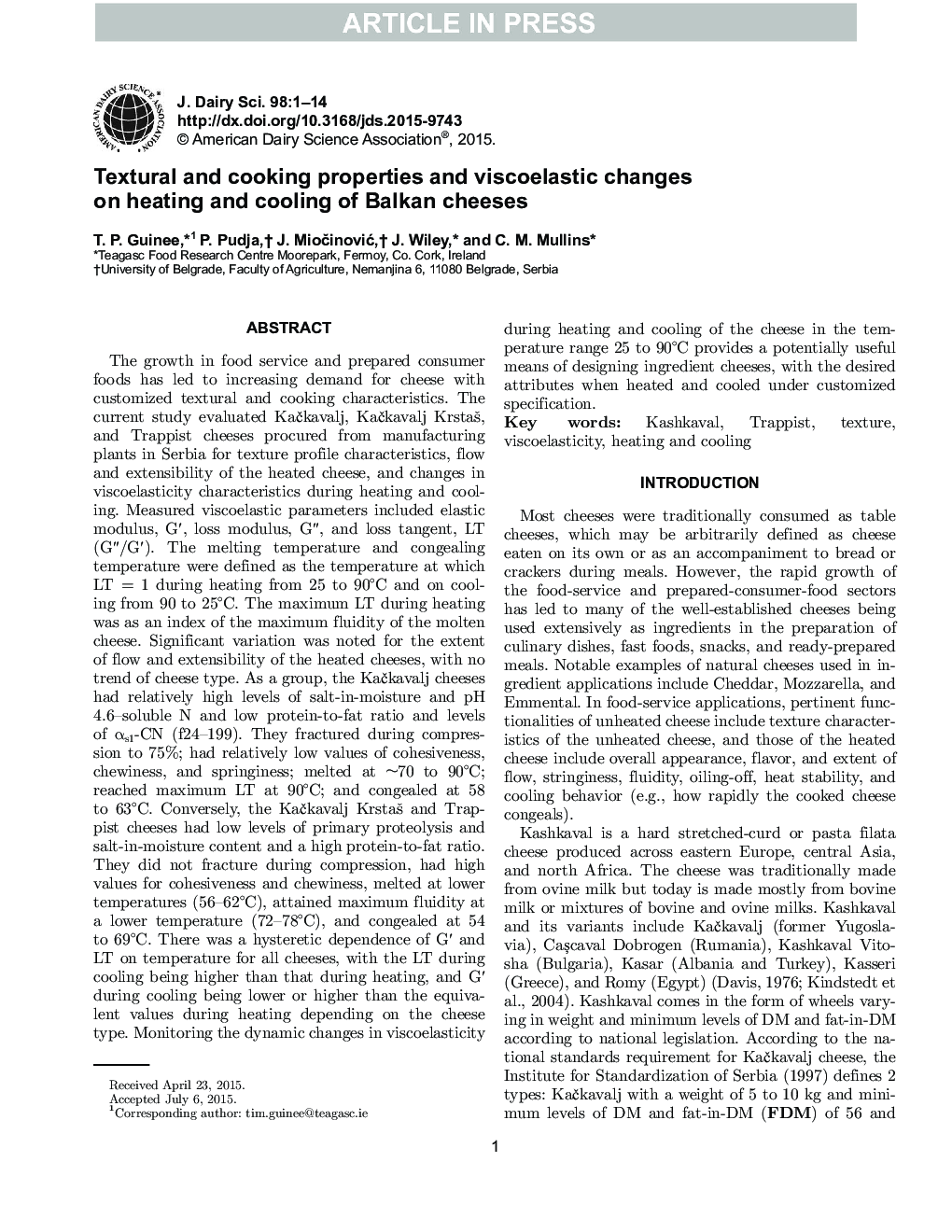| کد مقاله | کد نشریه | سال انتشار | مقاله انگلیسی | نسخه تمام متن |
|---|---|---|---|---|
| 10974509 | 1108026 | 2015 | 14 صفحه PDF | دانلود رایگان |
عنوان انگلیسی مقاله ISI
Textural and cooking properties and viscoelastic changes on heating and cooling of Balkan cheeses
ترجمه فارسی عنوان
خواص متنی و آشپزی و تغییرات واسکولاسیون در حرارت دادن و خنک کردن پنیر بالکان
دانلود مقاله + سفارش ترجمه
دانلود مقاله ISI انگلیسی
رایگان برای ایرانیان
موضوعات مرتبط
علوم زیستی و بیوفناوری
علوم کشاورزی و بیولوژیک
علوم دامی و جانورشناسی
چکیده انگلیسی
The growth in food service and prepared consumer foods has led to increasing demand for cheese with customized textural and cooking characteristics. The current study evaluated KaÄkavalj, KaÄkavalj KrstaÅ¡, and Trappist cheeses procured from manufacturing plants in Serbia for texture profile characteristics, flow and extensibility of the heated cheese, and changes in viscoelasticity characteristics during heating and cooling. Measured viscoelastic parameters included elastic modulus, Gâ², loss modulus, Gâ³, and loss tangent, LT (Gâ³/Gâ²). The melting temperature and congealing temperature were defined as the temperature at which LT = 1 during heating from 25 to 90°C and on cooling from 90 to 25°C. The maximum LT during heating was as an index of the maximum fluidity of the molten cheese. Significant variation was noted for the extent of flow and extensibility of the heated cheeses, with no trend of cheese type. As a group, the KaÄkavalj cheeses had relatively high levels of salt-in-moisture and pH 4.6-soluble N and low protein-to-fat ratio and levels of αs1-CN (f24-199). They fractured during compression to 75%; had relatively low values of cohesiveness, chewiness, and springiness; melted at ~70 to 90°C; reached maximum LT at 90°C; and congealed at 58 to 63°C. Conversely, the KaÄkavalj KrstaÅ¡ and Trappist cheeses had low levels of primary proteolysis and salt-in-moisture content and a high protein-to-fat ratio. They did not fracture during compression, had high values for cohesiveness and chewiness, melted at lower temperatures (56-62°C), attained maximum fluidity at a lower temperature (72-78°C), and congealed at 54 to 69°C. There was a hysteretic dependence of Gâ² and LT on temperature for all cheeses, with the LT during cooling being higher than that during heating, and Gâ² during cooling being lower or higher than the equivalent values during heating depending on the cheese type. Monitoring the dynamic changes in viscoelasticity during heating and cooling of the cheese in the temperature range 25 to 90°C provides a potentially useful means of designing ingredient cheeses, with the desired attributes when heated and cooled under customized specification.
ناشر
Database: Elsevier - ScienceDirect (ساینس دایرکت)
Journal: Journal of Dairy Science - Volume 98, Issue 11, November 2015, Pages 7573-7586
Journal: Journal of Dairy Science - Volume 98, Issue 11, November 2015, Pages 7573-7586
نویسندگان
T.P. Guinee, P. Pudja, J. MioÄinoviÄ, J. Wiley, C.M. Mullins,
